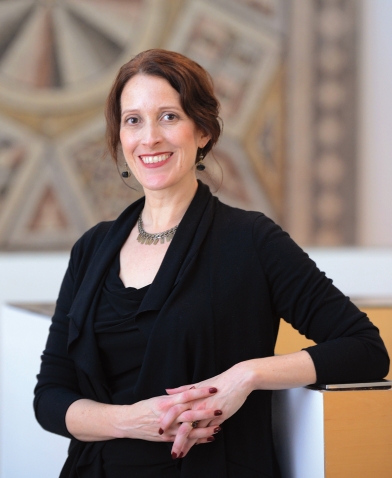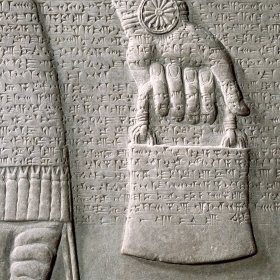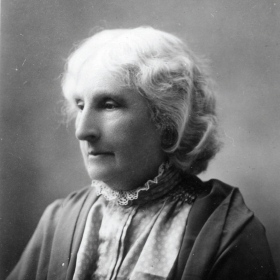We caught up with Assistant Professor of Art Kimberly Cassibry about what’s new in antiquities and the art department.
You study commemoration in the ancient world. What does that encompass?
My dissertation was on arch monuments, which are inaccurately known as triumphal arches. They could be commissioned to commemorate any kind of event: funerary monuments, religious dedications. Something like 800 of them survived from the Roman Empire. Most of them are in the provinces, so it’s a really good gauge of what was of interest to the provinces at a particular moment.
Can you give an example?
There’s a fascinating arch monument from Mainz, Germany, that was set up by a local town councilman for the god Jupiter, and this was probably the third century C.E. It was nothing at all like any arch monument ever erected in Rome. So the idea that the freestanding arch is an effective monument spread out to the provinces, but then the provinces did what they wanted with them.
Tell us about Antiquities Today, the seminar you’re co-teaching this spring with Bryan Burns from the classical studies department.
Because the Davis Museum is about to be reinstalled next fall, and a lot of the antiquities that have been in storage are going to go into new Mediterranean antiquities galleries, we decided we would team-teach this course and look at recent reinstallations of antiquities collections, especially controversial ones. So we’re going to have four case studies, and the Parthenon marbles in the Acropolis Museum [in Athens] will be one of them. We’ll debate who owns antiquities, whether or not they’re authentic. At the same time, students will be researching objects in the Davis’s collection to prepare them to go back on view.
You also teach the introductory art history course, ARTH 100, which last fall was updated for the first time in many years.
What we’re experimenting with is changing the format, so rather than a big lecture course, there are [four] small courses all working with the same syllabus. … Rather than being organized chronologically, we’re organizing it thematically, and focusing on ways of understanding images. So [in one lecture], we were talking about iconoclasm. [For example,] iconoclasm related to the destruction of the [Bamiyan] Buddhas in Afghanistan. Then we also talked about iconoclasm related to The Sleepwalker [by Toni Matelli] on campus and that controversy, to bring it home a little bit. … We want the course to continue to be one that all Wellesley students want to take. We have a much different student body today, and they have a very different learning style, so we’re trying to create a class that’s going to make a difference for students who are on campus now.







We ask that those who engage in Wellesley magazine's online community act with honesty, integrity, and respect. (Remember the honor code, alums?) We reserve the right to remove comments by impersonators or comments that are not civil and relevant to the subject at hand. By posting here, you are permitting Wellesley magazine to edit and republish your comment in all media. Please remember that all posts are public.